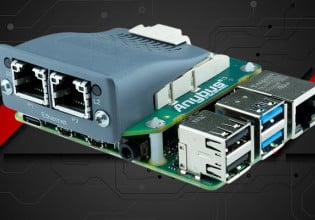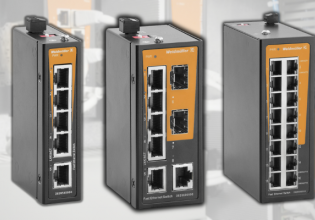Monitoring Both Analog and Discrete I/O Signals With One Module
Acromag's latest multi-functioning Ethernet remote I/O modules are designed to monitor both analog and discrete signals, aiming to save on costs and computational power by freeing up PLCs and other control devices.
Acromag has added two multi-functioning Ethernet remote I/O modules to their Busworks NT Series designed to help customers with handling discrete and analog signals. The new remote Ethernet capabilities of the modules aim to provide manufacturers a cost-effective solution with remote monitoring that reduces the amount of computational power required by the main PLC or control system.

The NT2510 and NT2530 are designed to help manufacturers with remote I/O capabilities. Image used courtesy of Acromag
Multi-Function Ethernet I/O Modules
The NT2510 and NT2530 are both part of Acromag’s Busworks NT Series, a series of products designed to help manufacturers with remote I/O capabilities. The NT Series is capable of expansion, based on changing needs in the automated environment, giving manufacturers and automation users more options when looking to expand or improve existing equipment. The Busworks NT Series also gives customers a cost savings benefit since their I/O expansion doesn’t require an entire control system overhaul because new modules can simply be added to those already in place.
Remote I/O Module Benefits
Why would automation users opt to use remote I/O modules and what are the benefits of such systems? For starters, remote monitoring can free up computational capabilities for PLCs and other control components so they have more computational capacity for other, higher level tasks. The modules are also capable of communicating directly with each other, eliminating the need for a PLC link between them.
Another advantage of a remote module is increased system reaction time. Since the sensor is directly linked to the module, it has first access to the data being transmitted by the sensors. This direct link makes the device advantageous for making IF/THEN or other boolean based decisions.
Since boolean type logic can be completed with the module, many tasks can be monitored by the module, and information regarding the state of the system is only sent to the main controller when necessary. An example of this might be a tank monitoring sensor connected to a remote module that monitors the state of the tank and only relays an appropriate signal to the PLC when the state changes, such as empty or full.

The two modules can be ordered as either Ethernet models or expansion models. Image used courtesy of Acromag
The NT2510 and NT2530 Specifications
The two models, the NT2510 and the NT2530, can be ordered as either NTE Ethernet models or NTX Expansion models. The expansion models are used to add extra I/O channels whenever they are connected to NTE Ethernet models.
The NT2510 and the NT2530 are available with four inputs and two outputs that are current based and also contain four discrete I/O channels. The NT2530 is able to monitor a voltage input whereas the NT2510 cannot. In order to monitor and control I/O signals, the Ethernet models contain a network interface. Both models are DIN-rail mountable and connect together to share power without having to daisy chain between modules.
A wide temperature range of (-40 to 70°C) allows manufacturers to use the devices in almost any environment. They are also built with a rugged enclosure to help with harsh manufacturing environments. In addition, the modules are CE compliant and can be programmed over a web browser with the use of Ethernet. Acromag hopes their new BusWorks NT2000 series of remote monitoring modules will help to reduce manufacturing costs by effective remote monitoring of both analog and discrete sensor signals.






